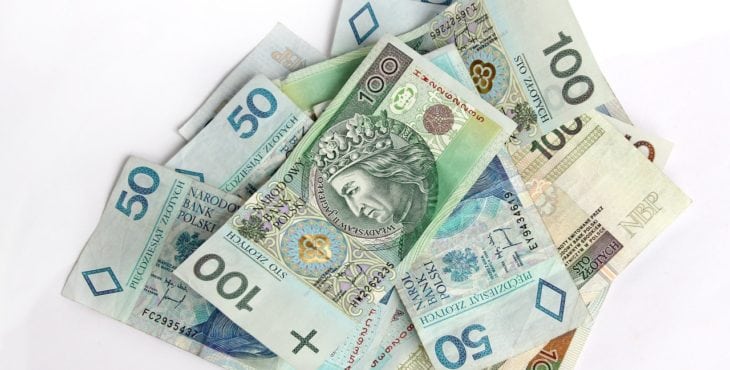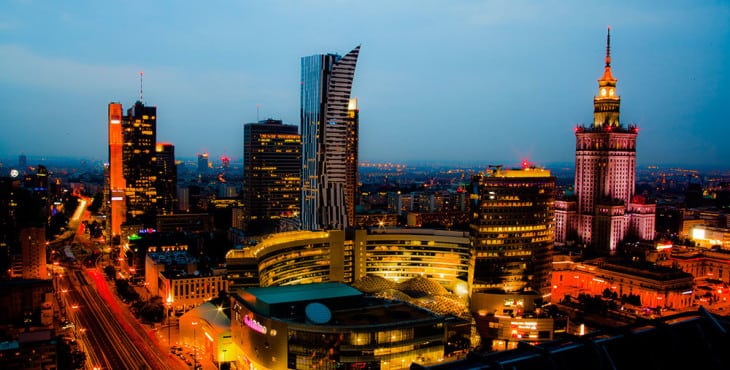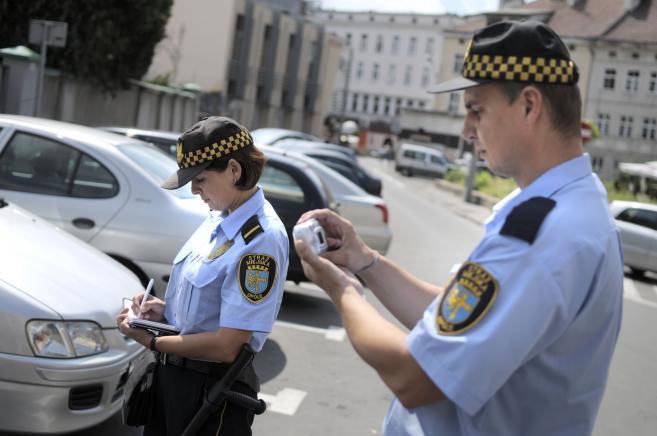It’s no secret that living in Poland is much cheaper compared to other European countries. Affordable prices of food, rent and entertainment are usually one of the main reasons why people choose Poland to be their home. At the same time, if you are thinking of moving to Poland you should take into consideration that you may earn considerably less than you used to. To make this decision easier for you, we’ve put together a list of standard expenses making up the cost of living in Poland in 2018.
2020 cost of living Pocket guide
- Cost of accommodation in Poland
- Cost of food in Poland
- Cost of transport in Poland
- Cost of eating out in Poland
- Cost of going out and entertainment in Poland
- List of the most affordable to the most expensive cities in Poland
You can check the up to date exchange rates for Polish zloty here.
Cost of accommodation in Poland
Warsaw is by far the most expensive city when it comes to renting a flat. The average cost of a medium size flat in the capital can reach even as high as 2800 PLN per month. A bit cheaper flats can be rented in Wroclaw (2260 PLN a month) and Gdansk (1995 PLN a month). The cheapest large city in Poland is Bydgoszcz with rents as low as 1267 PLN a month for a medium size flat.
| City | Flat size | Average monthly rent |
|---|---|---|
| Bydgoszcz | 0-38 m2 | 996 PLN |
| 38-60 m2 | 1267 PLN | |
| 60-90 m2 | 1713 PLN | |
| Gdansk | 0-38 m2 | 1353 PLN |
| 38-60 m2 | 1995 PLN | |
| 60-90 m2 | 2590 PLN | |
| Katowice | 0-38 m2 | 1279 PLN |
| 38-60 m2 | 1769 PLN | |
| 60-90 m2 | 2399 PLN | |
| Krakow | 0-38 m2 | 1445 PLN |
| 38-60 m2 | 1877 PLN | |
| 60-90 m2 | 2585 PLN | |
| Lublin | 0-38 m2 | 1306 PLN |
| 38-60 m2 | 1688 PLN | |
| 60-90 m2 | 2205 PLN | |
| Lodz | 0-38 m2 | 1203 PLN |
| 38-60 m2 | 1645 PLN | |
| 60-90 m2 | 2581 PLN | |
| Poznan | 0-38 m2 | 1159 PLN |
| 38-60 m2 | 1636 PLN | |
| 60-90 m2 | 2201 PLN | |
| Szczecin | 0-38 m2 | 1186 PLN |
| 38-60 m2 | 1552 PLN | |
| 60-90 m2 | 2014 PLN | |
| Warsaw | 0-38 m2 | 1984 PLN |
| 38-60 m2 | 2799 PLN | |
| 60-90 m2 | 4015 PLN | |
| Wroclaw | 0-38 m2 | 1477 PLN |
| 38-60 m2 | 2260 PLN | |
| 60-90 m2 | 2921 PLN |
On top of your rent you need to add a monthly cost of utilities. On average, bills for electricity, heating, water and garbage for a medium size flat are costing 620 PLN. Of course this price will depend on the city you live in, local council tax and your utilities usage. Internet is another additional cost you should think of which adds to another 45 PLN to your expenses.
| Utilities (Monthly) | Average monthly cost | Range |
| Basic (Electricity, Heating, Water, Garbage) for 85m2 Apartment | 620 PLN | 400-850 PLN |
| Internet (10 Mbps, Unlimited Data, Cable/ADSL) | 45 PLN | 30-60 PLN |
Cost of food
Food in Poland is fairly cheap, especially compared to countries like the UK or France. Compared to these countries, food prices in Poland are on average around 50% lower. Prices of some products may surprise as cheese for example is really expensive in comparison to meat which price is among the lowest in the whole European Union.
| Product | Average cost | Range |
| Milk (regular), (1 liter) | 2.37 PLN | 2-3 PLN |
| Loaf of Fresh White Bread (500g) | 2.72 PLN | 2-3 PLN |
| Rice (white), (1kg) | 3.17 PLN | 2-5 PLN |
| Eggs (12) | 7.08 PLN | 4.80-8.40 PLN |
| Local Cheese (1kg) | 21.87 PLN | 18-30 PLN |
| Chicken Breasts (Boneless, Skinless), (1kg) | 15 PLN | 13-18 PLN |
| Beef Round (1kg) (or Equivalent Back Leg Red Meat) | 31 PLN | 22-40 PLN |
| Apples (1kg) | 3 PLN | 2-4 PLN |
| Banana (1kg) | 4.28 PLN | 3.50-5 PLN |
| Oranges (1kg) | 4.50 PLN | 4-6 PLN |
| Tomato (1kg) | 5.16 PLN | 4-8 PLN |
| Potato (1kg) | 1.65 PLN | 1-2.50 PLN |
| Onion (1kg) | 2 PLN | 1-3 PLN |
| Lettuce (1 head) | 2.80 PLN | 2-4 PLN |
| Water (1.5 liter bottle) | 1.79 PLN | 1.50-3 PLN |
| Bottle of Wine (Mid-Range) | 20 PLN | 15-30 PLN |
| Domestic Beer (0.5 liter bottle) | 2.99 PLN | 2.50-4.00 PLN |
| Imported Beer (0.33 liter bottle) | 4.00 PLN | 3-6 PLN |
Cost of transport
| Transportation | Average cost | Range |
| One-way Ticket (Local Transport) | 3.40 PLN | 3-4.40 PLN |
| Monthly Pass (Regular Price) | 100 PLN | 89-100 PLN |
| Taxi Start (Normal Tariff) | 6.50 PLN | 5-8 PLN |
| Taxi 1km (Normal Tariff) | 2.40 PLN | 2.00-2.80 PLN |
| Gasoline (1 liter) | 4.60 PLN | 4.30-5 PLN |
Cost of eating out in Poland
| Eating and drinking | Average cost | Range |
| Meal, Inexpensive Restaurant | 20 PLN | 15-30 PLN |
| Meal for 2 People, Mid-range Restaurant, Three-course | 100 PLN | 70-120 PLN |
| McMeal at McDonalds (or Equivalent Combo Meal) | 17 PLN | 15-20 PLN |
| Cappuccino (regular) | 7.40 PLN | 6-10 PLN |
| Domestic Beer (0.5 liter draught) in a pub | 7 PLN | 4-10 PLN |
Cost of going out and entertainment in Poland
| Activity | Average cost | Range |
| Concerts & music gigs | 30 PLN | 10-50 PLN |
| Cinema ticket | 20 PLN | 18-35 PLN |
| Theater ticket | 70 PLN | 50-200 PLN |
| Club entry | 15 PLN | 10-30 PLN |
Above data is based on over 28,164 entries.
The most affordable and most expensive cities in Poland
Similarly to any other country, Poland has its cheap and expensive regions. Choosing one city over another will have a significant impact on your salary, monthly spendings and possible savings. Here is the list of the main Polish cities ranked from the most affordable to the most expensive place to live (taking into consideration rent cost, bills and public transport costs):
#1 Bialystok
#2 Torun
#3 Bydgoszcz
#4 Szczecin
#5 Lodz
#6 Poznan
#7 Gdansk
#8 Wroclaw
#9 Krakow
#10 Warsaw
Avarage salary in Poland
In 2018 the average salary in Poland is heading towards 4900 PLN a month, which is around 3530 PLN after tax (shy of 830 Euro). Of course, income depends on many factors like industry, city, skills and education of the candidate, to name just a few. Here is the full report on average salaries in Poland.
You can check the up to date exchange rates for Polish zloty here.
Do you want more?
Check out 7 the best cities to live and work in Poland.
[fbcomments url=”http://www.foreignersinpoland.com/cost-of-living-in-poland/” width=”100%” count=”off” num=”5″ countmsg=”wonderful comments!”]




















